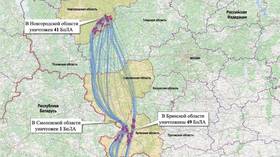Oil prices not here to stay: Both Brent and WTI continue losing streak

The US benchmark, West Texas Intermediate crude fell 2.9 percent to $42.21 per barrel, making it the seventh consecutive day of loss. Inventories, especially in the US, are overstocked.
Brent oil futures for April were hit equally hard as WTI, losing 0.5 percent to $53.44 a barrel on Wednesday. Most analysts agree that low oil prices will persist through 2015, weighed down by oversupply, mostly from US shale.
US crude inventories probably expanded by 4.4 million barrels to 453.3 million last week, according to a Bloomberg News survey. Figures from the industry-funded American Petroleum Institute indicated supplies rose by 10.5 million barrels last week.
On Tuesday, the American Petroleum Institute reported that US crude inventories stood at 450 million barrels in the week to March 13, a 10.5 million barrel increase. Official inventory will be reported by the US Energy Information Administration on Wednesday. A Bloomberg News survey forecasts that US crude inventories rose by 4.4 million barrels to 453.3 million last week.
U.S. oil-storage glut expands faster than expected http://t.co/IalL3vpNcGpic.twitter.com/KkiOdb5Gev
— Bloomberg Business (@business) March 18, 2015
Last week’s data showed that crude inventories reached 448.9m barrels, the biggest March supply levels since the 1930s.
Goldman Sachs first shocked markets early in January with a $40 a barrel oil forecast for WTI during the first six months of 2015, and only seeing a recovery to $65 in 2016. On the European side, the bank predicted Brent would slide to $42 per barrel, and only reach $70 in 2016.
Iran’s reemergence onto the market also poses a constant threat to oil prices. Long bogged down by sanctions, Iran hasn’t been able to develop or export its oil and gas. Reserves are estimated to be some of the largest in the world, and if a comprehensive nuclear deal is reached, that could all change, further pushing down the price of oil.
OPEC expects world oil demand to be 1.17 million barrels per day in 2015, according to its March report, unchanged from February.
READ MORE:Oil plummet: Crude dives below $45 for first time since 2009
Oil enjoyed a short rally in February after both Brent and WTI dropped below $45 per barrel in January, for the first time since 2009.
Since June, crude has lost 50 percent of its value.The price fell further when OPEC producers, led by Saudi Arabia, decided to keep production as is, whereas as cut would have provided relief for oil prices.
None of this is set to improve, as OPEC has signaled it won’t change its policy at its June meeting, and global demand hasn’t shifted, either.












